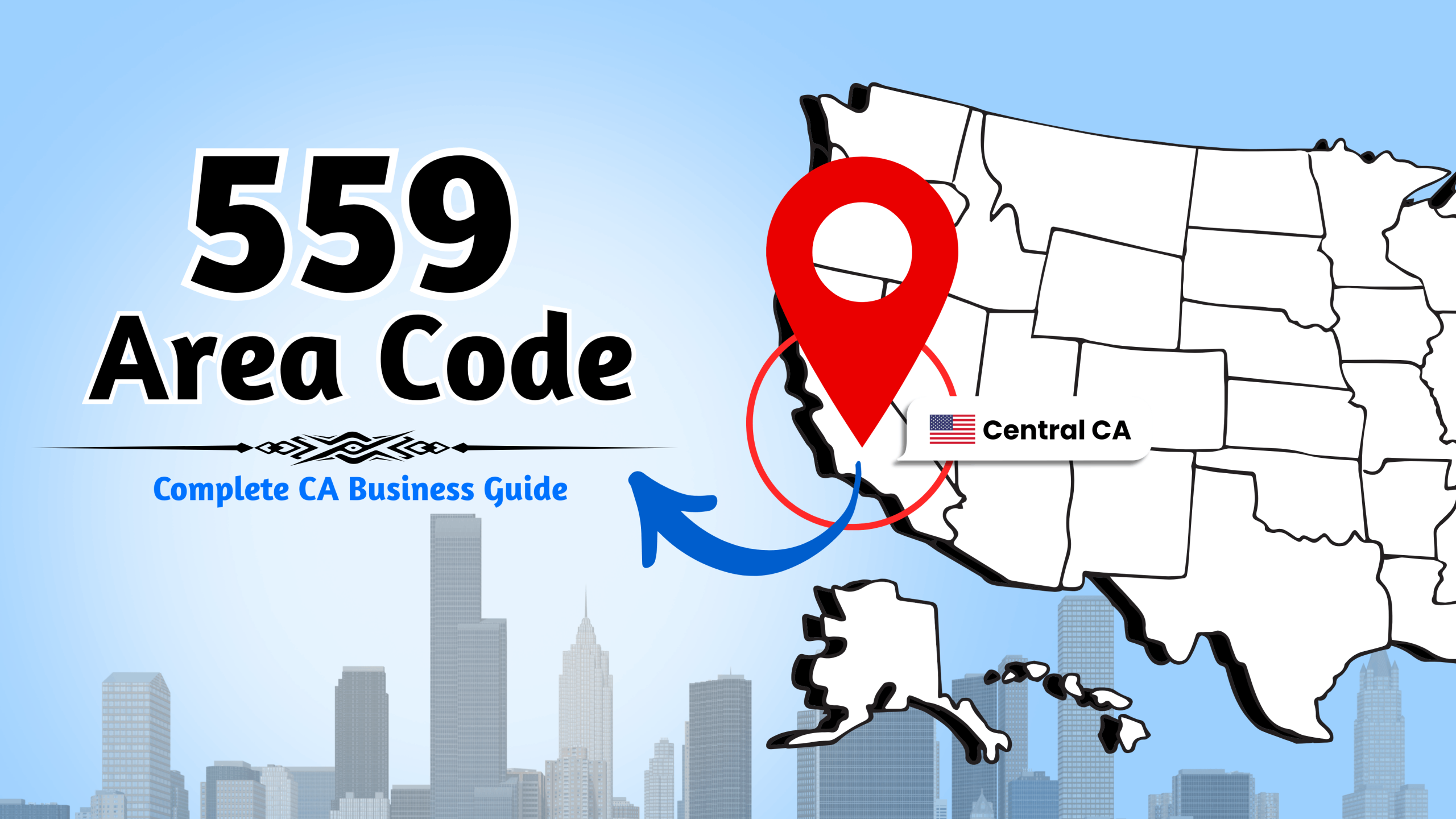Introduction:
The 559 area code has long been a key identifier for businesses fostering local presence and trust within California’s vibrant Central San Joaquin Valley. This crucial telecommunications framework is currently evolving, primarily due to regional growth and technological shifts, most notably with the impactful introduction of the 357 area code as an overlay to the established 559 territory. This change highlights the dynamic nature of regional connectivity and mandates that businesses stay well-informed to navigate this changing landscape effectively.
From an industry analyst viewpoint, this guide dissects Central California’s key telecommunication evolutions: the 559/357 area codes and the shift to mandatory ten-digit dialing. We explore how modern Voice over Internet Protocol (VoIP) solutions empower businesses in Fresno, Visalia, Madera, and beyond to adapt and thrive. Our analysis offers actionable insights and forward-looking strategies, focusing on leveraging advanced communication tools—considering technicalities, local identity benefits, and overall service value—to transform challenges into significant opportunities for sustained growth and market penetration.
The 559 Area Code – A Historical and Geographical Overview
This chapter delves into the foundational aspects of the 559 area code, a critical telecommunication identifier for Central California. We will explore its specific geographical reach across the San Joaquin Valley and identify the key cities that form its economic backbone.
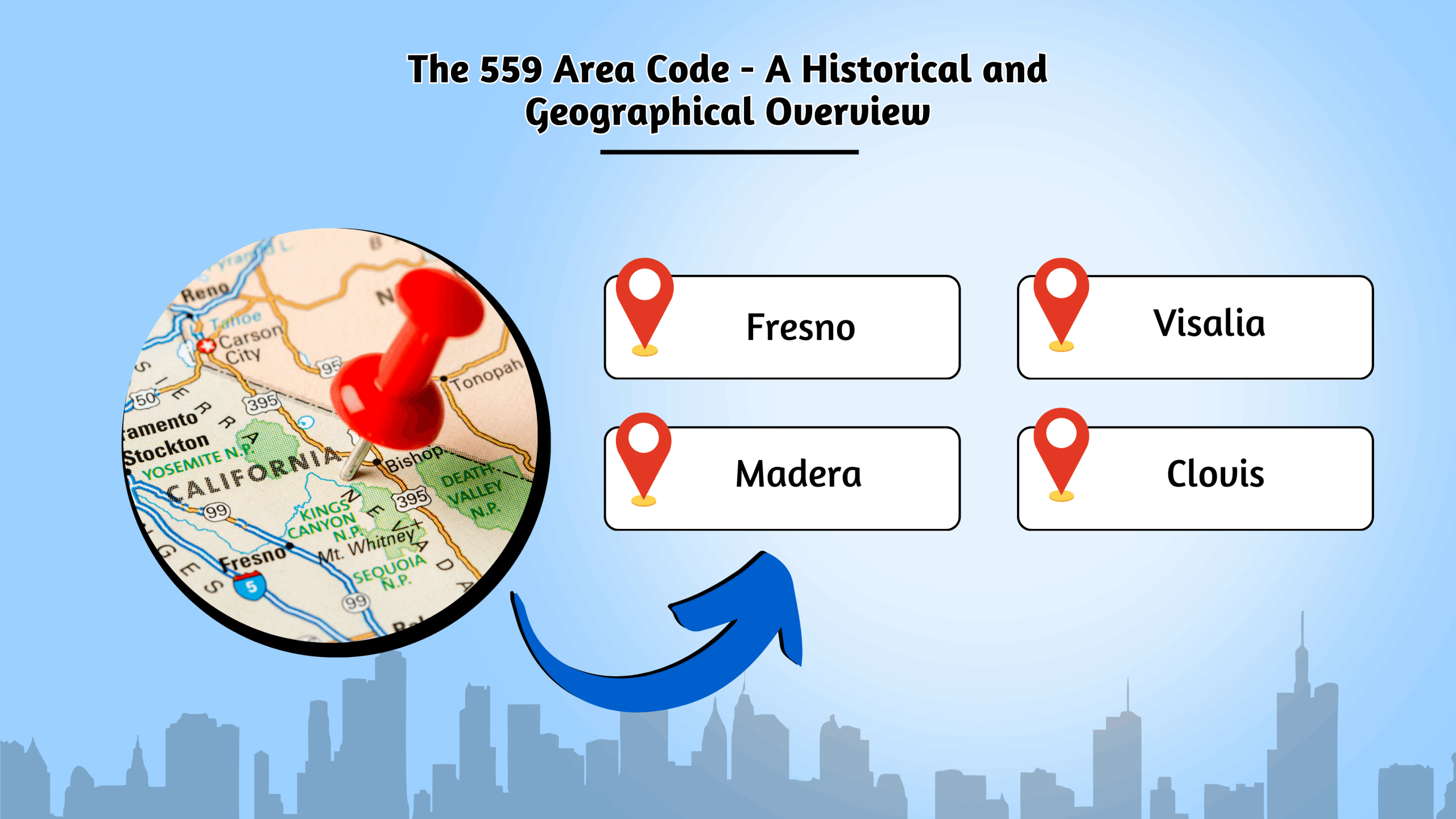
Geographical Boundaries: Mapping the area code 559 Territory
The 559 area code services a substantial portion of Central California, primarily encompassing the central and southern San Joaquin Valley. This agriculturally rich and increasingly urbanized region includes several key counties:
- Fresno County: The most populous county in the area code 559 region, home to the city of Fresno.
- Tulare County: Featuring cities like Visalia and Porterville.
- Madera County: Including the city of Madera.
- Kings County: With cities such as Hanford and Lemoore.
A conceptual 559 area code map would depict a territory stretching from the Sierra Nevada mountains in the east to the coastal ranges (though not reaching the coast itself) in the west. It’s a region characterized by its diverse economy, ranging from large-scale agriculture to manufacturing, logistics, and a growing service sector.
Key Economic Hubs within the 559 Area Code
Understanding the primary economic engines within the 559 territory is crucial for businesses seeking to establish a foothold.
- Fresno: As the largest city, Fresno is the undisputed economic and cultural center of the region. It boasts a diverse economy, a major university (California State University, Fresno), and serves as a critical transportation and distribution hub. Businesses here cater to a large metropolitan population and a wide array of industries.
- Visalia: Located in Tulare County, Visalia is another significant commercial center with a strong agricultural base and a growing retail and professional services sector. Its proximity to national parks also fuels a tourism component.
- Madera: Situated in Madera County, this city is known for its wineries, agriculture, and strategic location along major transportation corridors.
- Clovis: A rapidly growing city adjacent to Fresno, often recognized for its quality of life and distinct community identity.
- Hanford: The county seat of Kings County, with an economy influenced by agriculture, naval air station Lemoore, and related industries.
The 357 Area Code & 10-Digit Dialing: What You Need to Know
This section details a pivotal update to Central California’s telecommunications: the 357 area code overlay alongside the established 559. We will explore the reasons for this development, its key implications for residents and businesses, and the now-mandatory 10-digit dialing procedures.
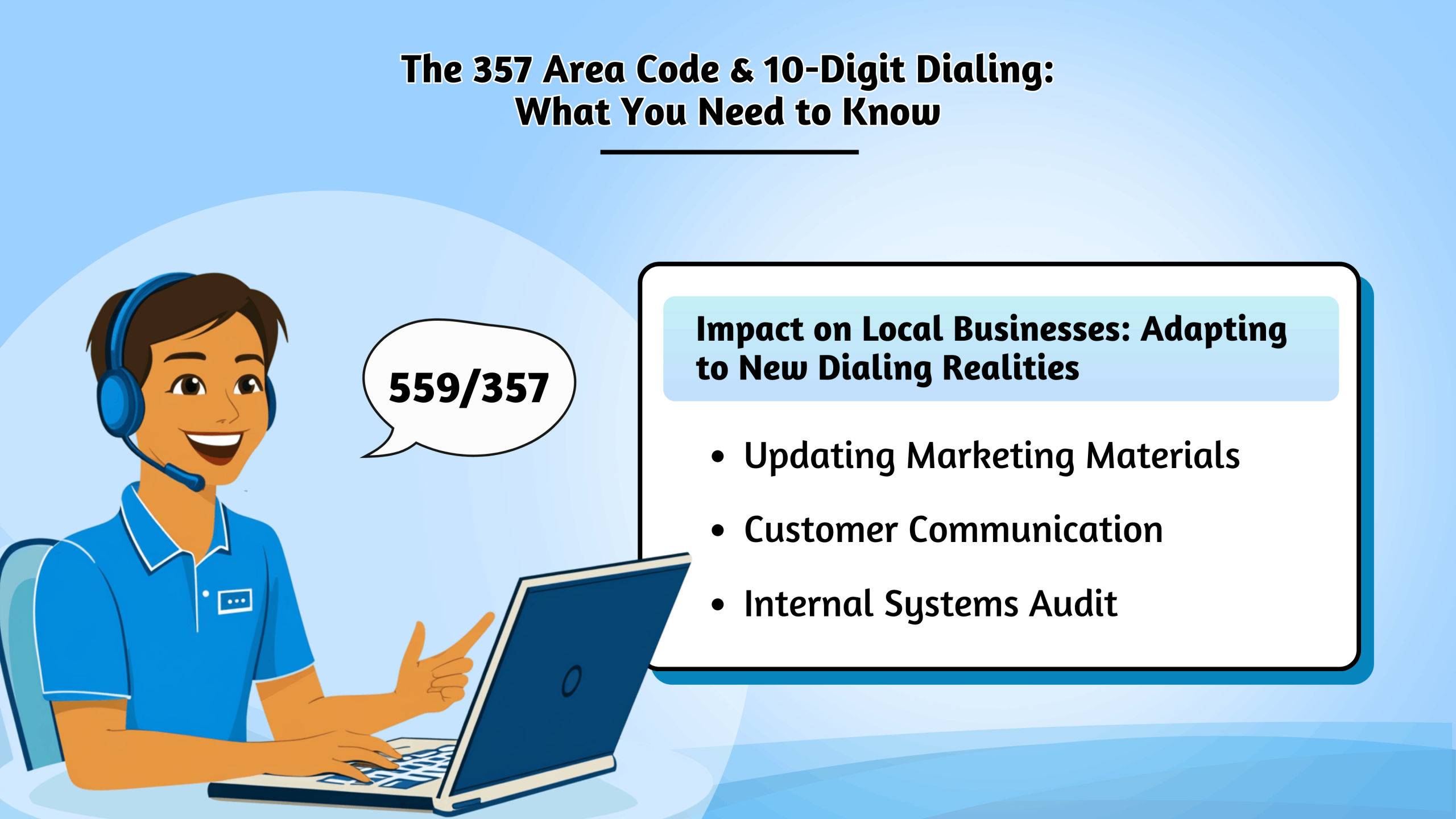
357 Area Code: Addressing Number Scarcity
In response to projections indicating that the available numbers within the 559 NXXs would soon be depleted, the CPUC, in consultation with NANPA, approved an overlay plan. This resulted in the introduction of the 357 area code, which officially went into effect in early 2025. This new designation now serves the exact same geographical territory as the 559.
Key implications of the 559/357 overlay:
- Coexistence: Both area codes now serve the same region. Existing 559 numbers do not change.
- New Number Assignments: Requests for new phone service or additional lines may result in assignment of a number with either the 559 or the 357 prefix, based on availability.
- No Change in Calling Zones or Rates: The introduction of the 357 prefix does not alter what constitutes a local or long-distance call, nor does it change the cost of making calls.
The Critical Shift: Mandatory 10-Digit Dialing (1+Area Code+Number)
Perhaps the most significant operational change for residents and businesses resulting from the overlay is the mandatory implementation of ten-digit dialing (or 1+10-digit dialing for some systems) for all local calls.
- Effective Date: This change became mandatory in the first quarter of 2025, following a permissive dialing period where both 7-digit and 10-digit calls would connect.
- Universal Requirement: All local calls, whether from a 559 number to another 559 number, a 357 to a 357, or between 559 and 357 numbers, now require dialing the area code 559 followed by the seven-digit telephone number.
- Impact on Devices: Businesses and residents needed to update programmed devices, such as auto-dialers, security systems, PBX systems, fax machines, and contact lists in mobile phones and computer software, to reflect the 10-digit dialing requirement.
Impact on Local Businesses: Adapting to New Dialing Realities
For businesses, the transition to 10-digit dialing and the introduction of a new 559 area code had several immediate operational considerations:
- Updating Marketing Materials: All business stationery, websites, advertisements, vehicle signage, and any other materials displaying a phone number needed to be reviewed and updated to reflect the 10-digit number format.
- Customer Communication: Proactive communication with customers about the change was important to prevent confusion and ensure continued connectivity.
- Internal Systems Audit: A thorough check of all internal communication systems (PBXs, VoIP configurations, CRM contact fields) was necessary to ensure compatibility with 10-digit dialing.
- Staff Training: Ensuring all staff members were aware of the new dialing procedures and could communicate them clearly to customers.

Beyond Connectivity: The Strategic Importance of Local Phone Numbers
Beyond simple connectivity, a local area code 559 or 357 offers powerful strategic advantages for businesses aiming to succeed in their target region. This section examines its crucial role in building community trust, amplifying local marketing effectiveness, and influencing customer perception.
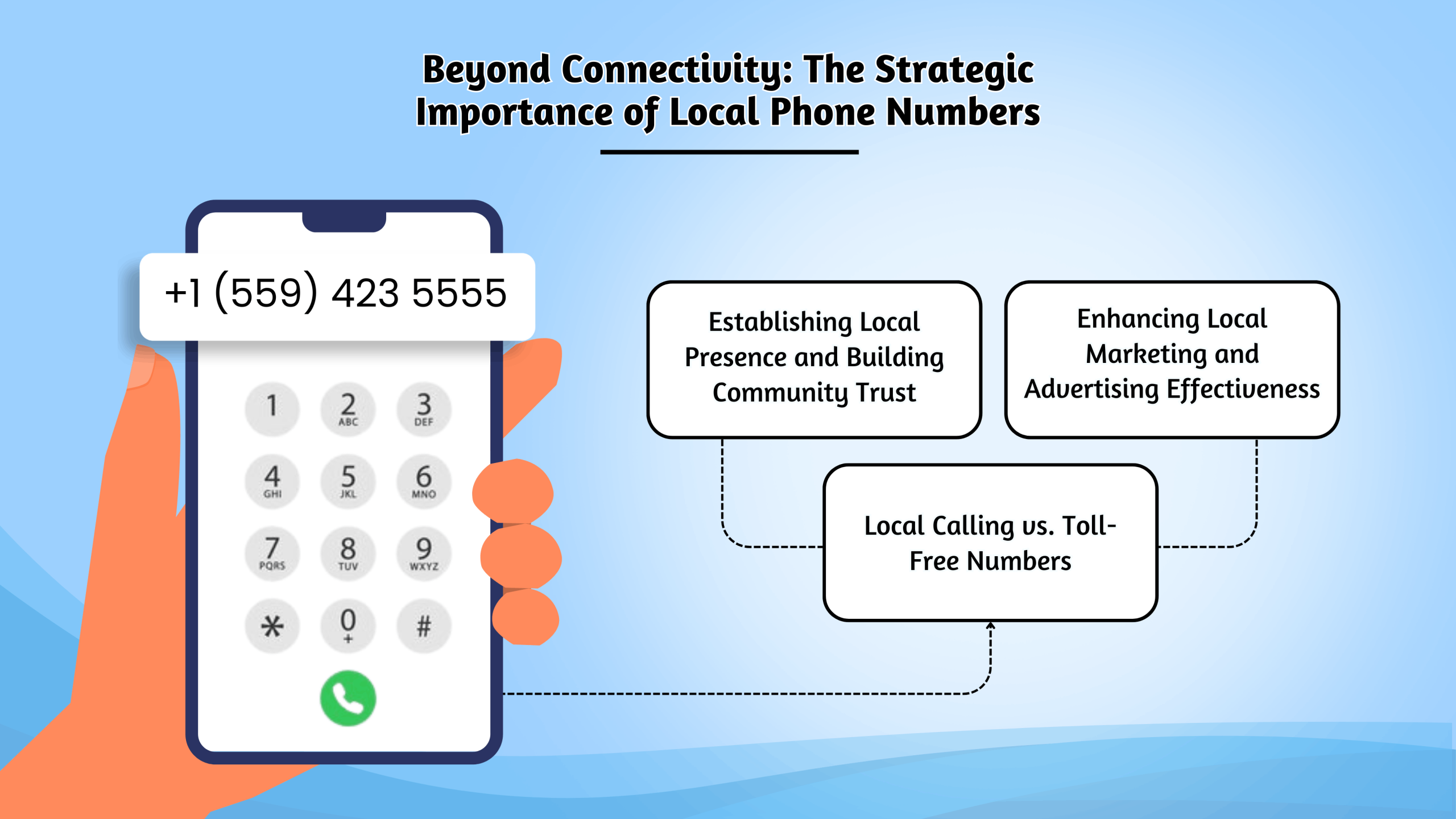
Establishing Local Presence and Building Community Trust
In an increasingly globalized marketplace, a local identity can be a powerful differentiator. For businesses serving the San Joaquin Valley, a phone number with area code 559 or the newer 357 prefix acts as an immediate signal of local presence. This is not merely cosmetic; it taps into a psychological preference among many consumers to deal with local businesses.
- Increased Trust: Customers often perceive local businesses as more accessible, accountable, and invested in the community. A local number reinforces this perception.
- Higher Answer Rates: Anecdotal evidence and marketing studies suggest that calls from local area codes 559 are more likely to be answered than calls from unfamiliar or toll-free numbers, which are sometimes associated with unsolicited sales calls. This is particularly true for outreach to new prospects.
- Community Connection: For service-based businesses, trades, and retail operations, a local number is an integral part of being woven into the fabric of the community.
Enhancing Local Marketing and Advertising Effectiveness
A local number is a cornerstone of effective regional marketing campaigns.
- Targeted Campaigns: When advertising specifically to Fresno, Visalia, or Madera markets, using a local number in those advertisements resonates more strongly.
- Local SEO: For online search, having a local phone number listed consistently across directories and a website can contribute positively to local search engine optimization (SEO) efforts, helping businesses appear in “near me” searches.
- Memorability and Brand Reinforcement: A consistent local number, particularly if it’s a memorable one (vanity number), can aid in brand recall within the target market.
Local Calling vs. Toll-Free Numbers
While toll-free numbers (800, 888, etc.) have their place, particularly for national businesses, local numbers offer distinct advantages, especially concerning cost perception for the customer.
- Customer Perception: Dialing a local number is generally understood by customers to incur no additional charge beyond their standard phone service plan. This can reduce hesitation in making initial contact.
- Business Costs: For the business itself, VoIP-based local numbers are typically very cost-effective, often bundled with a suite of other communication features. Exploring the detailed pricing for such services can reveal significant savings compared to traditional telephony.
The Business Edge: VoIP Strategies for the 559/357 Area Codes
This chapter explores Voice over Internet Protocol (VoIP) as a pivotal technology for businesses seeking superior connectivity and efficiency in the area code 559/357 region. We will examine its fundamental principles and the significant operational advantages it offers for modern enterprises in Central California.
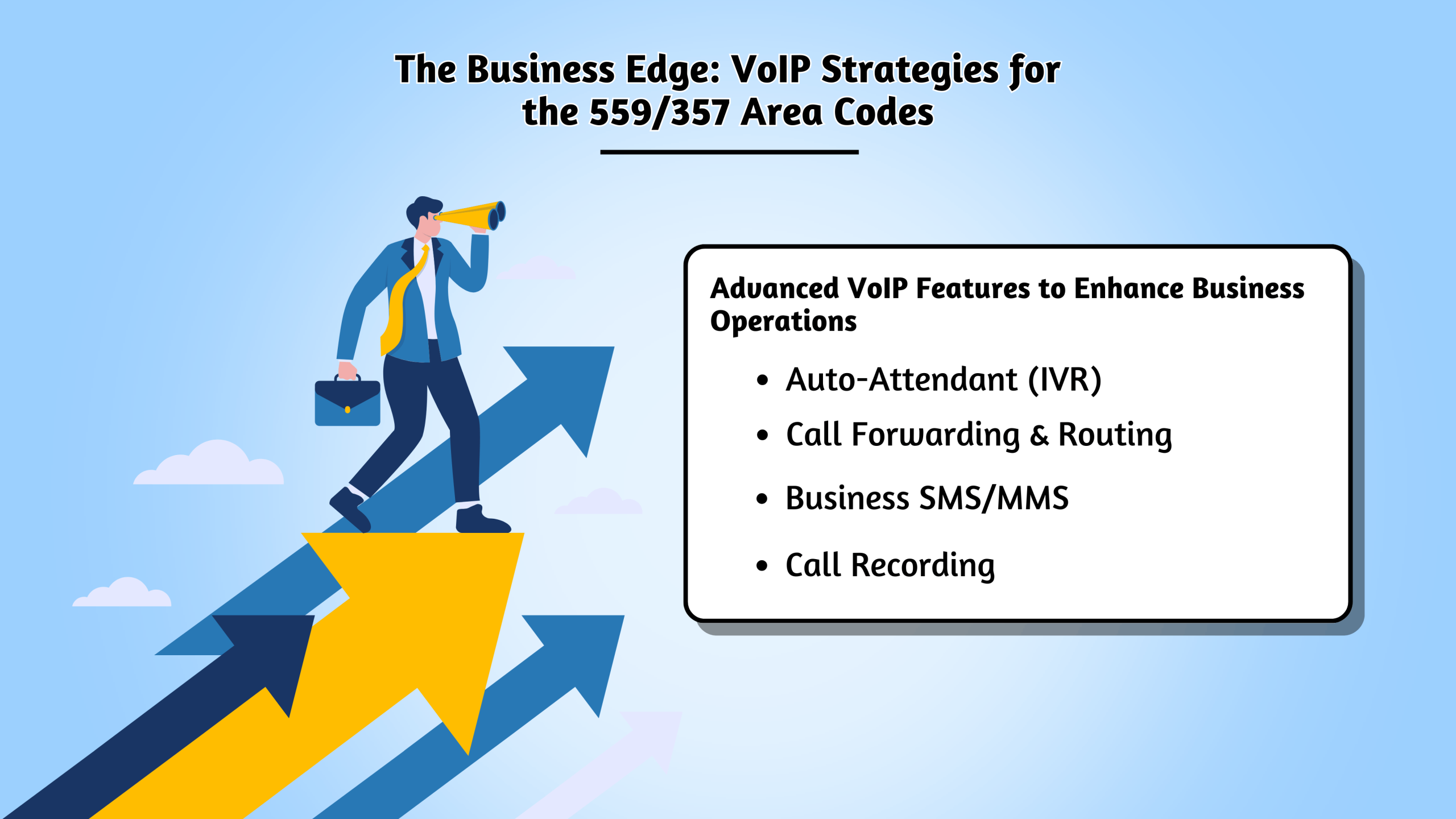
Introduction to Voice over Internet Protocol (VoIP)
Voice over Internet Protocol (VoIP) has revolutionized business communications by transmitting voice calls over the internet instead of traditional copper-wire phone lines (POTS – Plain Old Telephone Service).
Core principles of VoIP:
- Digital Transmission: Voice is converted into digital packets and sent over IP networks.
- Hardware/Software Options: VoIP can be used via dedicated IP phones, traditional analog phones with an Analog Telephone Adapter (ATA), or directly through software applications (softphones) on computers and mobile devices.
- Location Independence: A VoIP number is not tied to a physical line or location. This means a business can have a 559 area code phone number (or 357) regardless of where its physical office is located.
Key Benefits of VoIP for Businesses in the area code 559/357 Region
Adopting a VoIP system offers numerous advantages for businesses targeting or operating in the Central California region:
- Flexibility and Scalability: Easily add or remove lines, assign numbers, and adjust features as business needs change. This is ideal for growing businesses or those with seasonal fluctuations.
- Cost Savings: VoIP plans often offer lower monthly fees and reduced per-call costs, especially for long-distance and international calls, compared to traditional phone services. Comparing our price structures with legacy systems often highlights these benefits.
- Rich Feature Set: Standard VoIP offerings typically include a vast array of advanced calling features that were once exclusive to expensive enterprise PBX systems.
- Remote Work Enablement: VoIP empowers remote work by allowing employees to make and receive calls on their business line from any location with an internet connection, using softphones or mobile apps.
- Business Continuity: Since calls are routed over the internet, disruptions to a physical office (e.g., power outage, natural disaster) do not necessarily mean a loss of phone service if calls can be rerouted to other locations or mobile devices.
Advanced VoIP Features to Enhance Business Operations
Modern VoIP platforms, such as the one offered by Rozper, come equipped with a suite of features designed to optimize communication workflows:
- Auto-Attendant (IVR): Professionally greets callers and directs them to the appropriate department or individual using a customizable menu system.
- Call Forwarding & Routing: Sophisticated rules can be set to forward calls based on time of day, caller ID, or team member availability. This ensures important calls are never missed.
- Voicemail-to-Email/Transcription: Receive voicemails as audio files in your email inbox, often with text transcriptions, allowing for quick review and response.
- Business SMS/MMS: Send and receive text messages using your business phone number, facilitating another popular communication channel with customers.
- Conference Calling & Video Conferencing: Host multi-participant audio and often video meetings.
- Call Recording: For quality assurance, training, or dispute resolution (ensure compliance with consent laws).

Selecting a VoIP Provider: Key Considerations for 559/357 Businesses
When choosing a VoIP provider for your 559 area code business numbers, several factors should be carefully evaluated:
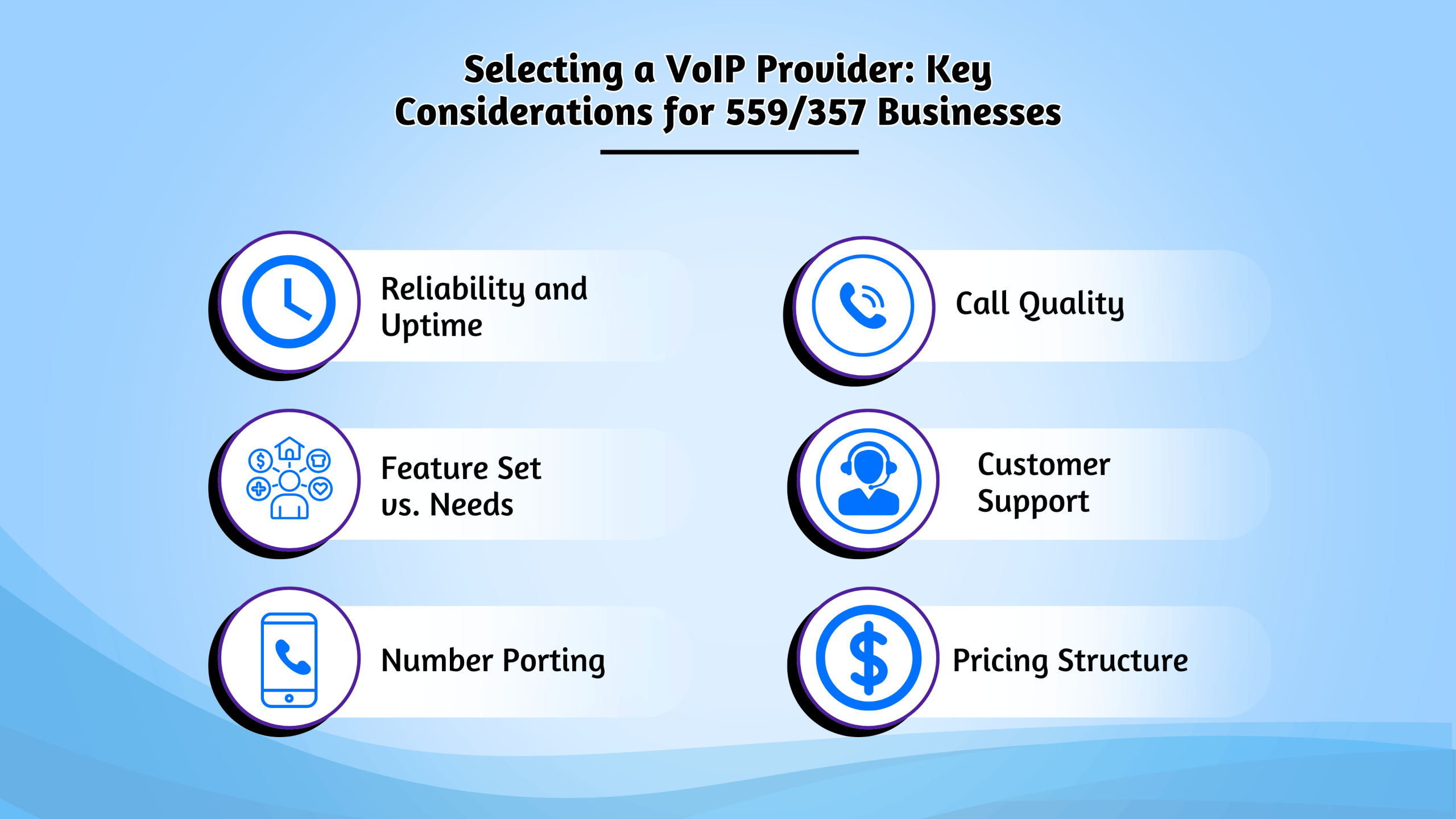
- Reliability and Uptime: Look for providers with a proven track record of service stability and clear Service Level Agreements (SLAs).
- Call Quality: Ensure the provider utilizes high-quality voice codecs and has robust network infrastructure to minimize jitter, latency, and dropped calls.
- Feature Set vs. Needs: Match the provider’s available features with your specific business requirements. Don’t pay for features you won’t use, but ensure critical ones are available.
- Customer Support: Responsive and knowledgeable customer support is crucial, especially during setup and if any technical issues arise.
- Security: Inquire about the provider’s security measures to protect against voice hacking, denial-of-service attacks, and ensure call privacy.
- Pricing Structure: Understand all costs involved – monthly fees per user/line, per-minute rates (if any), feature add-on costs, and any contractual obligations. A transparent view of their price is essential.
- Number Porting: If you have an existing area code 559 number, confirm the provider offers a smooth porting process.
Solving Key Business Communication Issues with VoIP
This table serves as a quick reference for understanding how modern communication platforms address historical and current challenges faced by businesses.
| Common Challenge | Traditional System Limitation | VoIP Solution | Benefit for 559/357 Users |
| Need for a professional greeting | Often requires expensive PBX | Auto-Attendant (IVR) | Consistent, professional call handling 24/7. |
| Missed calls when away from desk | Calls go to a single device voicemail | Find Me/Follow Me, Mobile Apps, Voicemail-to-Email | Increased responsiveness, location flexibility. |
| Scaling phone lines up or down | Slow, may require technician visits | Easy online portal management | Agility to match business needs, cost control. |
| High cost of traditional business lines & features | Expensive hardware, per-feature charges | Inclusive feature sets, lower monthly fees | Reduced telecom expenses, access to advanced tools. |
| Establishing local presence in multiple 559 cities | Requires multiple physical lines/offices | Multiple virtual local numbers routed to one system | Cost-effective market expansion, enhanced local image. |
| Maintaining service during local office outage | Service disruption if lines are site-dependent | Cloud-based call routing, automatic failover | Business continuity, minimized downtime. |
Navigating Security: Key Phone Scams and Essential Protection
As telecommunications evolve in regions like the 559/357 area codes, vigilance against phone scams is crucial. Awareness of common tactics and proactive protection can safeguard your information and assets.
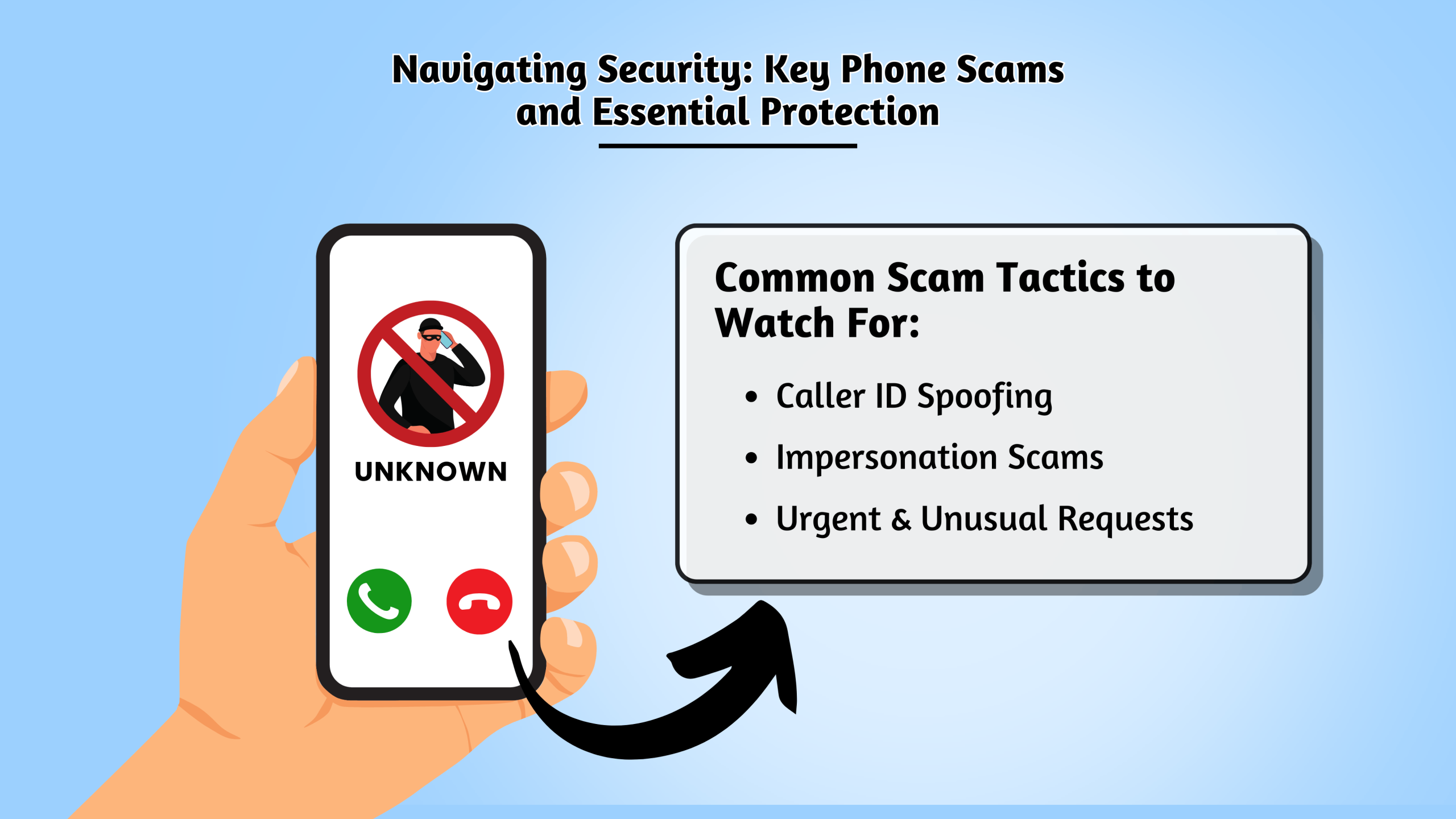
Common Scam Tactics to Watch For:
- Caller ID Spoofing: Scammers frequently fake a local number (e.g., from the 559 or 357 area) or impersonate trusted organizations on Caller ID to trick you into answering and trusting them.
- Impersonation Scams: Fraudsters often pose as government agencies (like the IRS or Social Security Administration), tech support companies, or banks. They typically create false urgency to solicit sensitive information, remote computer access, or immediate, untraceable payments.
- Urgent & Unusual Requests: Be cautious with any unsolicited call demanding immediate action, threatening consequences, or offering deals that seem too good to be true, including those that might try to exploit confusion around new area code or dialing procedures.
Essential Protection Strategies:
- Verify Independently, Don’t Trust Caller ID: If an unexpected call from a supposedly known entity asks for sensitive information or action, hang up. Contact the organization directly using an official number from their website or your statements.
- Guard Your Personal and Financial Information: Never provide details like your Social Security number, bank account numbers, credit card information, or passwords in response to unsolicited calls. Legitimate entities rarely request this unprompted.
- Resist High-Pressure Tactics & Unusual Payment Demands: Scammers often demand immediate action or payment via unconventional and untraceable methods like gift cards, cryptocurrency, or wire transfers. Recognize these as major red flags.
- Utilize Security Tools & Practices: Employ call blocking and filtering features available on your phone and through your service provider. For VoIP accounts, use strong, unique passwords and enable two-factor authentication if offered.
Focus on Security and Privacy in Digital Communications
As communications increasingly move to digital platforms, the emphasis on security and privacy will intensify. Businesses and providers alike will need to remain vigilant against evolving cyber threats, including robocalling, vishing (voice phishing), and service disruptions. Choosing communication partners that prioritize robust security protocols will be paramount.
Conclusion:
Central California’s evolving telecommunications landscape, with the dual 559/357 area codes and mandatory ten-digit dialing, presents strategic opportunities for businesses that adapt effectively. Understanding these shifts and leveraging advanced VoIP technologies allows companies across the San Joaquin Valley to ensure seamless connectivity, project a strong local presence, and enhance operational efficiency and scalability. Partnering with a forward-thinking communications provider for robust solutions—including local numbers, advanced calling features, and business continuity—is now an essential competitive strategy in this dynamic marketplace, not merely a luxury.
Ready to Master Your 559/357 Business Communications?
FAQ'S
No, your existing 559 area code phone number will not change. The 357 area code is an overlay, meaning it’s added to the same geographic region to provide new numbers. Existing numbers remain the same.
The primary reason is to ensure a continuing supply of telephone numbers for the region. The demand for new numbers for cell phones, business lines, VoIP services, and other devices was exhausting the available numbers in the 559 area code.
Yes, as of early 2025, ten-digit dialing (area code + seven-digit number, or 1 + area code + seven-digit number for some systems) is mandatory for all local calls within and between the 559 area codes.
Key benefits include cost savings, a wide range of advanced calling features (like auto-attendant, call routing, voicemail-to-email), flexibility to work from anywhere, scalability to easily add or remove lines, and enhanced business continuity.
No, these changes do not affect what is considered a local call or the rates for local and long-distance calls. Your calling areas and rates are determined by your specific phone service plan.


